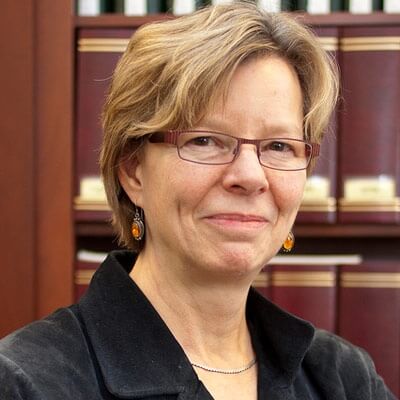News
Cherry A. Murray is the John A. and Elizabeth S. Armstrong Professor of Engineering and Applied Sciences; Professor of Physics; and Dean of the Harvard School of Engineering and Applied Sciences. (Photo by Eliza Grinnell, SEAS Communications.)
Cambridge, Mass. – October 3, 2014 – Cherry A. Murray, Dean of the Harvard School of Engineering and Applied Sciences (SEAS), is to receive the National Medal of Technology and Innovation, the White House announced today.
The National Medal of Technology and Innovation and the National Medal of Science are the United States' highest honors for achievement and leadership in the advancement of science and technology. Recipients of the National Medal of Technology and Innovation are leaders who have made lasting contributions to America’s competitiveness and quality of life and who have helped strengthen the Nation’s technological workforce.
“These scholars and innovators have expanded our understanding of the world, made invaluable contributions to their fields, and helped improve countless lives,” President Barack Obama said in a statement. “Our nation has been enriched by their achievements, and by all the scientists and technologists across America dedicated to discovery, inquiry, and invention.”
Murray, who is the John A. and Elizabeth S. Armstrong Professor of Engineering and Applied Sciences and Professor of Physics, joined the Harvard faculty in July 2009 after a prominent career as an executive at Bell Laboratories and the Lawrence Livermore National Laboratory.
A celebrated experimentalist, Murray is well known for her scientific accomplishments using light scattering, an experimental technique where photons are fired at a target of interest. Scientists can then gather insights into surface physics and photonic behavior by analyzing the spray of photons in various directions from such collisions.
Her research has also addressed topics relating to soft condensed matter and complex fluids, hybrid materials that show the properties of different phases of matter. The control of suspensions, foams, and emulsions is relevant to the development of, for example, drug delivery systems and "lab-on-a-chip" devices.
Among other diverse topics in condensed matter physics, Murray has studied nanostructures, phase transitions, optical phenomena in semiconductors, and controlled self-assembly of optical materials—all critical for the advancement of quantum optics, engineered semiconductors, and tools such as optical tweezers.
Born in Fort Riley, Kan., and the daughter of a diplomat, Murray lived in the United States, Japan, Pakistan, South Korea, and Indonesia as a child. She received her B.S. in 1973 and her Ph.D. in physics in 1978 from the Massachusetts Institute of Technology. She has published more than 70 papers in peer-reviewed journals and holds two patents in near-field optical data storage and optical display technology.
Murray was elected to the National Academy of Sciences in 1999, to the American Academy of Arts and Sciences in 2001, and to the National Academy of Engineering in 2002. She has served on more than 80 national and international scientific advisory committees, governing boards, and National Research Council panels. In 2010–11 she served on the National Commission on the BP Deepwater Horizon Oil Spill and Offshore Drilling. She is currently a member of the U.S. Secretary of Energy Advisory Board and serves on the Commission to Review the Effectiveness of the National Energy Laboratories.
The National Medal of Technology and Innovation was created by statute in 1980 and is administered for the White House by the U.S. Department of Commerce’s Patent and Trademark Office. Murray will receive the medal at a White House ceremony later this year.
Cutting-edge science delivered direct to your inbox.
Join the Harvard SEAS mailing list.
